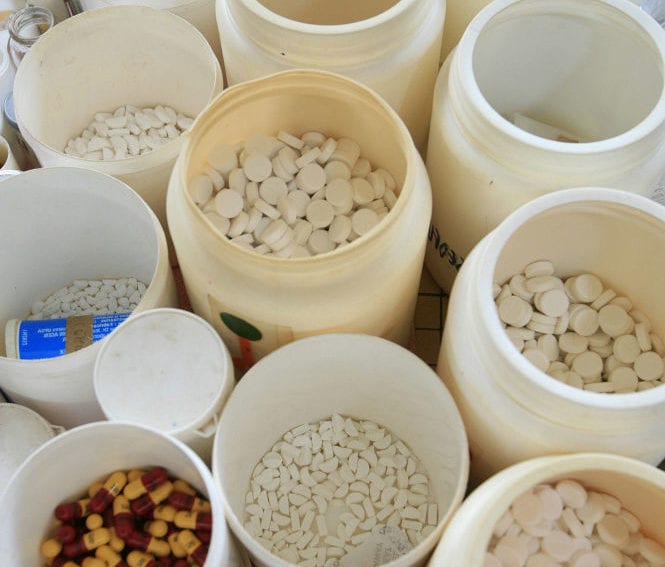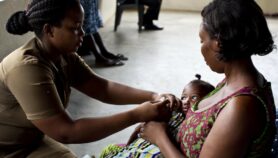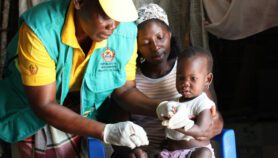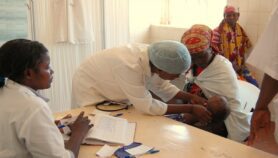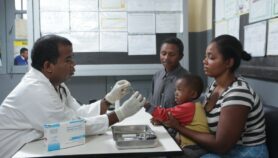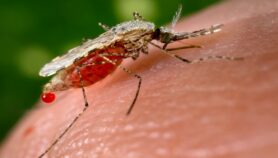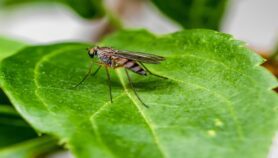Send to a friend
The details you provide on this page will not be used to send unsolicited email, and will not be sold to a 3rd party. See privacy policy.
[NAIROBI]Sub-Saharan Africahas a large and potentially growing market for non-quality-assuredantimalarials,尤其ally in the private sector, astudy说。
质量保证的抗疟药是由WHO治疗疟疾等全球卫生组织认证的药物。They contain the indicated amount of active pharmaceutical ingredient (API) as opposed to poor quality or substandard ones that may not contain the specified amount of API.
According to researchers, because the recommended first-line medicines for treating uncomplicated malaria in Sub-Saharan Africa — also called artemisinin combination therapy —are mainly distributed by the private sector, studies that explore this market are necessary.
Therefore, the study published in theMalaria Journal上个月(5月25日)检查了非质量获得的青蒿素联合疗法(非QAACT)的程度,可在撒哈拉以南非洲八个疟疾的私营部门和公共部门获得私人和公共部门 - 宾夕法尼亚州民主共和国,刚果民主共和国,肯尼亚,马达加斯加,尼日利亚,坦桑尼亚,乌干达和赞比亚 - 2009年至2015年之间。
“The rise of non-QAACT is critical not only to patient health and safety, but also to effective malaria control.”
Kate O’Connell, ACTwatch Group
Trained volunteers conducted a total of 29 malaria medicine outlet surveys in the countries to examine outlets that could possibly stock antimalarials in the public (non-profit) and private-for-profit sectors, during the peak malaria transmission season for each country. In each country, the surveys lasted six to eight weeks.
The researchers screened about 50,000 eligible outlets and audited over 336,000 antimalarials, including more than 78,000 quality-assured ACT and 83,000 non-QAACT— medicines which have not been granted global regulatory approval.
“Private sector availability of non-QAACT varied substantially between countries during the most recent survey round from 0 per cent in Madagascar and 4 per cent in Benin, to 17 per cent in Zambia, 21 per cent in Tanzania, and 38 per cent in Uganda,” notes the paper. “More than 40 per cent of private sector outlets were stocking non-QAACT in Kenya (42 per cent), and about half of outlets had non-QAACT in stock in Nigeria (48 per cent) and Democratic Republic of Congo’s Katanga (53 per cent).”
Kate O’Connell, the founding principal investigator for ACTwatch Group, which conducted the study, says: “Addressing the availability and distribution of non-QAACT will require effective private sector engagement and evidence-based strategies to address provider and consumer demand for these products.”
O’Connell adds: “The rise of non-QAACT is critical not only to patienthealth和安全,还可以在面对抗药性的情况下有效控制疟疾和保护青蒿素药物功效。”
Willis Simon Akhwale, Kenya-based malaria control specialist, says that the study covers a long period, and provides an opportunity to do a trend analysis.
Akhwale tellsSciDev.Netthat the findings could be due to the lack of local manufacturing of antimalarials and high cost of quality antimalarials in Sub-Saharan Africa.
According to Akhwale, the findings do not portend well for the achievements made so far towards malaria control in Africa.
“Most countries in Sub-Saharan Africa have weak regulatory mechanisms,” Akhwale adds, noting that international manufacturers shouldpartnerwith local manufacturers to produce these medicines.It may be easier for regulatory authorities to monitor local production than a wide array of imports, Akhwale explains.
The findings, says Akhwale, are important to the ministries of health, national malaria control programs and industrialisation ministries. Participation of local manufacturers and importers is also key.
He is calling for strict regulation by regulatory boards with full support of the government.
这件作品由Scidev.net的撒哈拉以南非洲英语桌子制作。
参考
ACTwatch Group and othersDo anti-malarials in Africa meet quality standards? The market penetration of non八个非洲国家的质量鉴定的青蒿素组合疗法(Malaria Journal,2017年5月25日)


